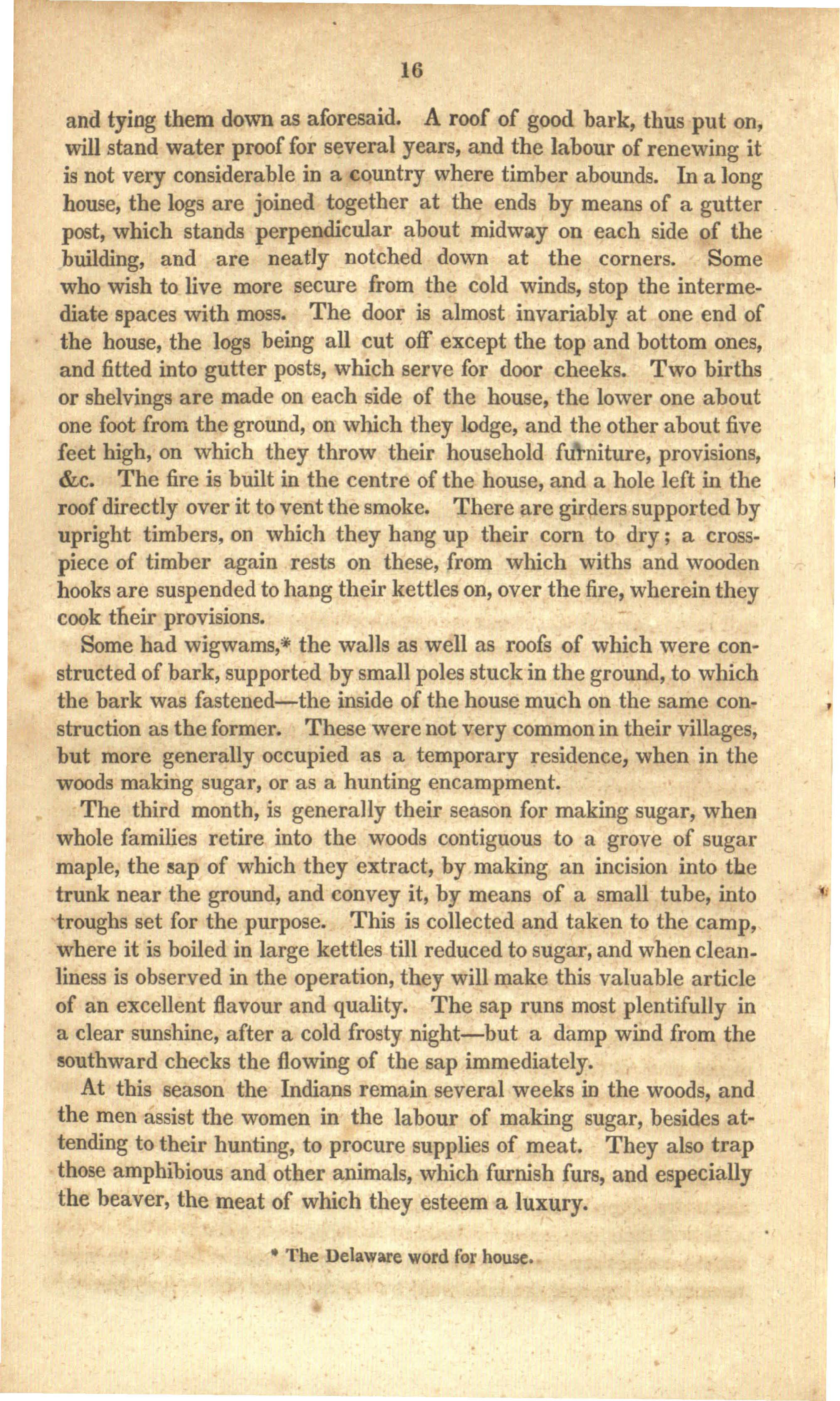and tying them down as aforesaid. A roof
of good bark, thus put on,
will stand water proof for several years, and
the labour of renewing it
is not very considerable in a country where
timber abounds. In a long
house, the logs are joined together at the ends
by means of a gutter
post, which stands perpendicular about midway on each
side of the
building, and are neatly notched down at the corners. Some
who wish to live more secure from the cold winds, stop the interme-
diate
spaces with moss. The door is almost invariably at one end of
the house,
the logs being all cut off except the top and bottom ones,
and fitted into
gutter posts, which serve for door cheeks. Two births
or shelvings are made
on each side of the house, the lower one about
one foot from the ground, on
which they lodge, and the other about five
feet high, on which they throw
their household furniture, provisions,
&c. The fire is built in the
centre of the house, and a hole left in the
roof directly over it to vent
the smoke. There are girders supported by
upright timbers, on which they
hang up their corn to dry; a cross-
piece of timber again rests on these,
from which withs and wooden
hooks are suspended to hang their kettles on,
over the fire, wherein they
cook their provisions.
Some had wigwams,* the walls as well as roofs of which were con-
structed of
bark, supported by small poles stuck in the ground, to which
the bark was
fastened - the inside of the house much on the same con-
struction as the
former. These were not very common in their villages,
but more generally
occupied as a temporary residence, when in the
woods making sugar, or as a
hunting encampment.
The third month, is generally their season for making sugar, when
whole
families retire into the woods contiguous to a grove of sugar
maple, the
sap of which they extract, by making an incision into the
trunk near the
ground, and convey it, by means of a small tube, into
troughs set for the
purpose. This is collected and taken to the camp,
where it is boiled in
large kettles till reduced to sugar, and when clean-
liness is observed in
the operation, they will make this valuable article
of an excellent flavour
and quality. The sap runs most plentifully in
a clear sunshine, after a
cold frosty night - but a damp wind from the
southward checks the flowing
of the sap immediately.
At this season the Indians remain several weeks in the woods, and
the men
assist the women in the labour of making sugar, besides at-
tending to their
hunting, to procure supplies of meat. They also trap
those amphibious and
other animals, which furnish furs, and especially
the beaver, the meat of
which they esteem a luxury.

